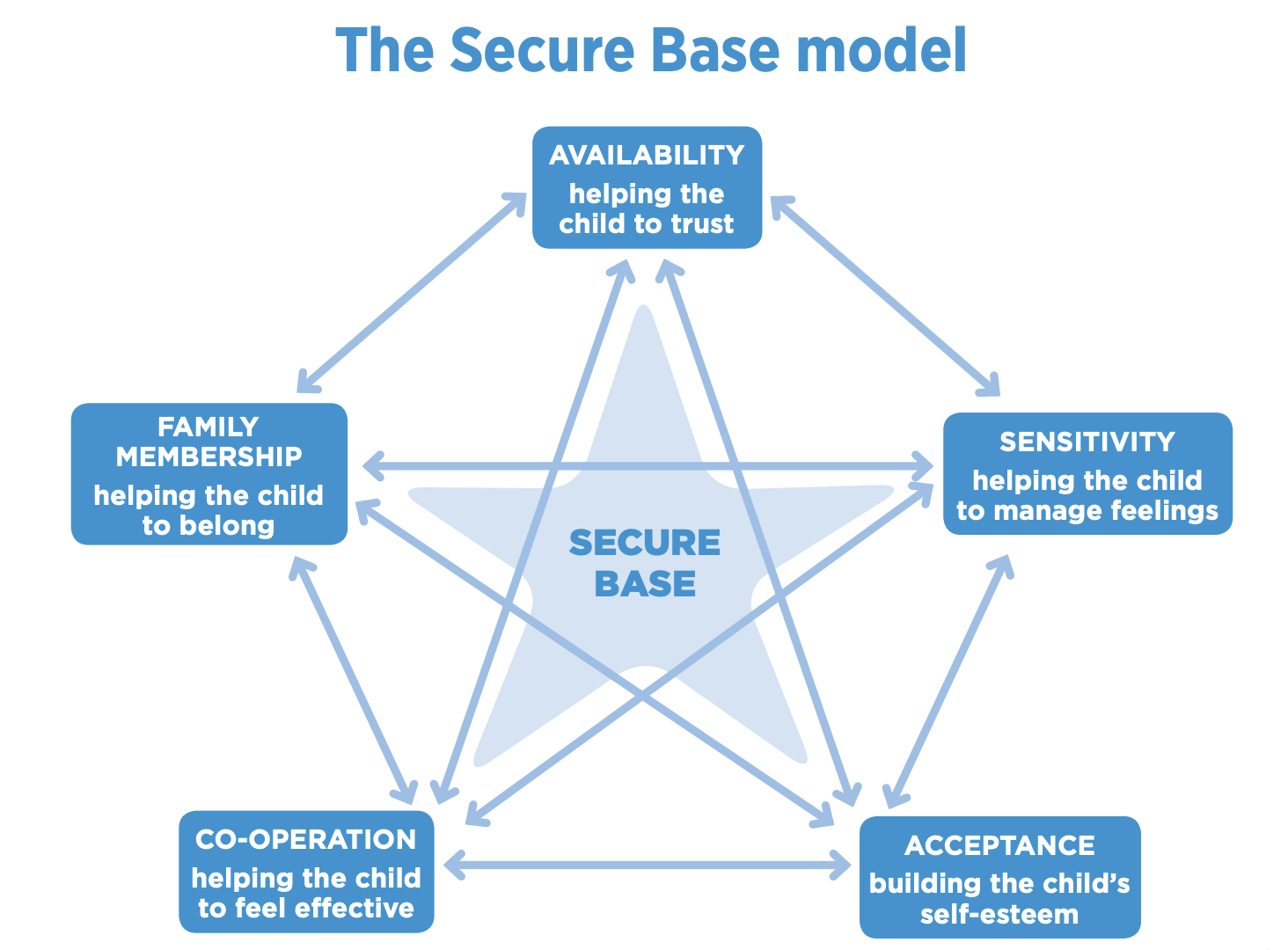Building Trust and Resilience: The Secure Base Model in Therapeutic Caregiving
Children and young people living in residential care often come with histories marked by loss, trauma and disrupted attachments. These experiences can leave them feeling unsafe in relationships and mistrustful of adults. For residential care staff, the challenge is to offer not just structure and supervision, but healing relationships that help young people rebuild trust, develop emotional security, and move towards positive futures.
One of the most effective frameworks for achieving this is the Secure Base Model (Schofield & Beek, 2009) — a practical, evidence-informed approach to therapeutic caregiving grounded in attachment theory.
What is the Secure Base Model?
Developed through research with foster carers and later applied to residential and educational settings, the Secure Base Model provides a structure for understanding and meeting the emotional and developmental needs of children who have experienced adversity.
The Secure Base Model
It identifies five caregiving dimensions that help children feel secure, confident, and capable of forming healthy relationships:
1. Availability – Being emotionally and physically present so the child experiences you as reliable and consistent.
2. Sensitivity – Recognising and responding to the child’s signals with empathy and attunement.
3. Acceptance – Valuing the child for who they are, reducing shame and promoting positive self-esteem.
4. Co-operation – Supporting the child to make choices and feel a sense of agency and control.
5. Family membership – Helping the child feel they belong and are part of a caring community.
Each dimension provides a pathway to strengthening attachment security and resilience, both key to recovery from trauma.
Why it Matters in Residential Care
Residential environments can feel institutional or impersonal if care is overly focused on routines and behaviour management. The Secure Base Model shifts the focus from what the child does to what the child needs.
When staff teams use the model consistently, it helps create a shared language and approach. Instead of asking “How do we stop this behaviour?”, teams begin to ask “What is this behaviour communicating about the child’s need for safety, connection, or control?”
This mindset shift promotes:
• Greater empathy and reflective practice among staff
• Consistency and coherence across the team
• Reduced placement breakdowns
• Improved emotional regulation and trust from young people
Applying the Model in Practice
Integrating the Secure Base Model doesn’t mean adding another layer of paperwork — it’s about embedding relational thinking into everyday care.
Examples include:
• Greeting each young person warmly and predictably each morning (Availability)
• Noticing subtle signs of anxiety or withdrawal and responding calmly (Sensitivity)
• Showing appreciation for effort, not just achievement (Acceptance)
• Involving young people in decisions about their daily routines (Co-operation)
• Creating shared rituals, celebrations and meaningful traditions (Family membership)
Over time, these repeated experiences of reliability and attunement help young people internalise a sense of safety and belonging — the foundation of therapeutic change.
How We Support Teams
At Mind Forest Psychology, we deliver training, reflective practice and clinical consultation to children’s residential care teams, helping translate psychological theory into everyday caregiving.
Our Secure Base Model training equips teams to understand attachment and trauma through a practical, strengths-based lens, reflect on their own caregiving style and team culture, and build consistent approaches that reduce challenging behaviour and promote emotional growth
By embedding the Secure Base principles, staff can become more confident, connected and resilient — and young people can begin to trust that care really can be different this time.
References:
Schofield, G. & Beek, M. (2009). Growing Up in Foster Care: Providing a Secure Base Through Adolescence. British Journal of Social Work, 39(7), 1315–1332.
Beek, M. & Schofield, G. (2014). The Secure Base Model: Promoting Attachment and Resilience in Foster Care and Adoption. London: BAAF.
#ResidentialCare #Attachment #SecureBase #TherapeuticCare

